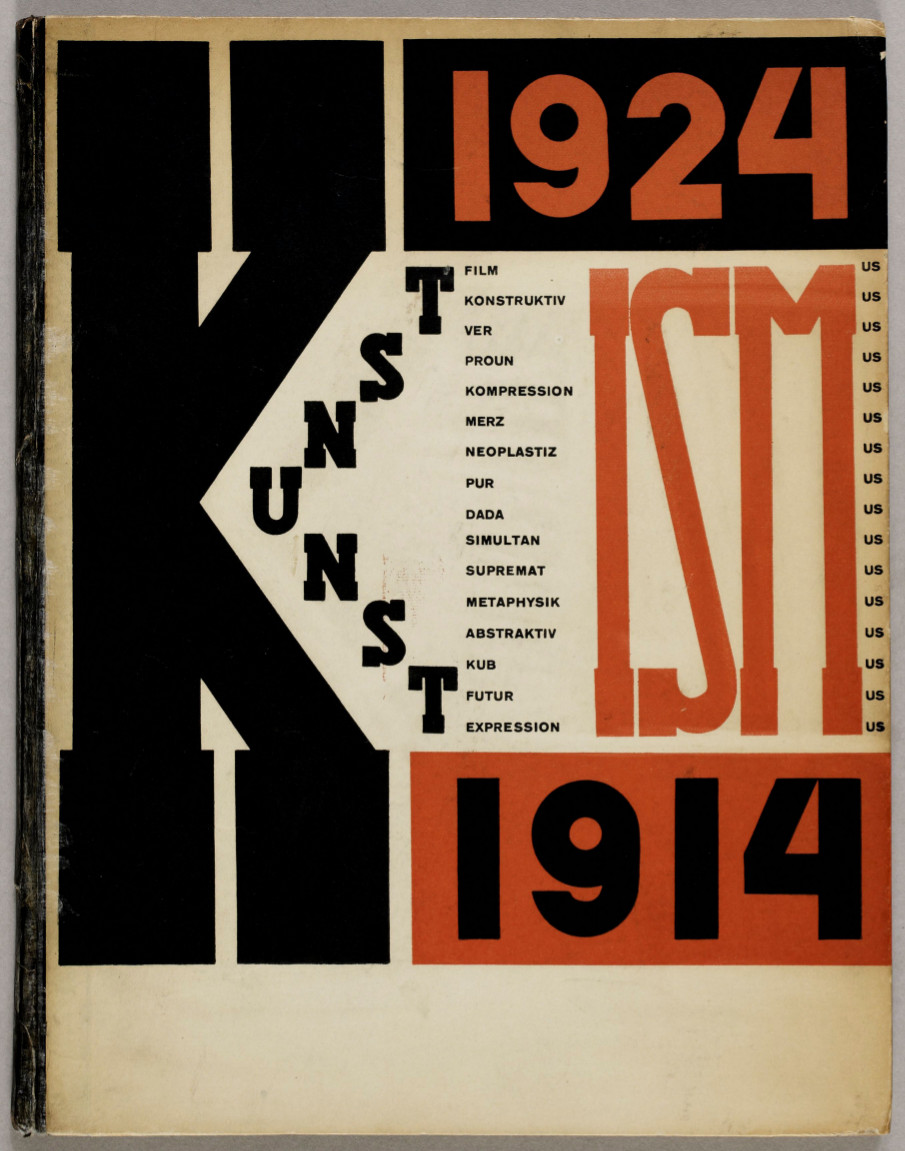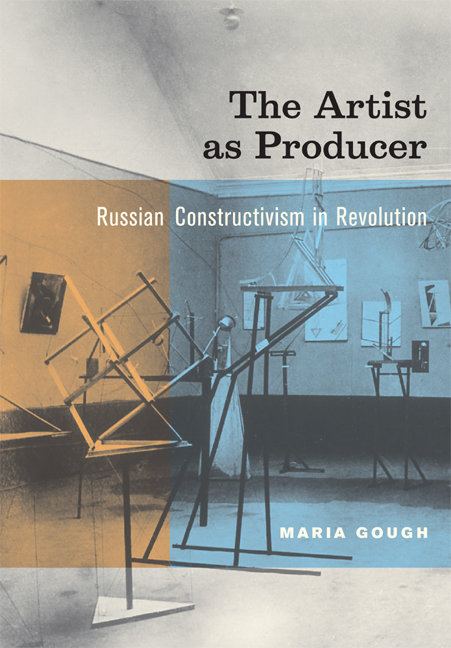El Lissitzky, Hans Arp: Die Kunstismen / Les ismes de l’art / The Isms of Art: 1914–1924 (1925) [DE/FR/EN]
Filed under artist publishing | Tags: · 1910s, 1920s, architecture, art, art history, avant-garde, film

“Habe eine Idee für das letzte Merz-Heft 1924: ‘Letzte Truppenschau aller Ismen von 1914-24’.” schrieb El Lissitzky in einem Brief. Es gelang ihm, Hans Arp für diese Idee zu begeistern.
This book begins with definitions by well-known artists of the various movements, or forms of art, of the period. They range from Cubism, Futurism, Expressionism, Abstract Art, through Metaphysicians, Suprematism, Simultanism, Dadaism, Purism, Neoplasticism, Merz, Proun, Perism, Constructivism, to Abstract Film. The section is followed by reproductions illustrating each movement.
Publisher Eugen Rentsch, Erlenbach-Zürich, 1925
Typography El Lissitzky
Print Staehle & Friedel, Stuttgart
xi+48 pages, 75 ills., 26.5 × 24.5 cm
Unlimited Edition
PDF (64 MB, via Bibliothèque Kandinsky)
PDF (43 MB, added on 2020-12-5, via Kunsthaus Zurich)
Find more Lissitzky’s publications on Monoskop wiki.
Margaret A. Rose: Marx’s Lost Aesthetic: Karl Marx and the Visual Arts (1984)
Filed under book | Tags: · 1840s, 1860s, 1920s, aesthetics, art, art history, art theory, avant-garde, constructivism, marxism, painting, socialist realism

“This book offers an original and challenging study of Marx’s contact with the visual arts, aesthetic theories, and art policies in nineteenth-century Europe. It differs from previous discussions of Marxist aesthetic theory in looking at Marx’s views from an art-historical rather than from a literary perspective, and in placing those views in the context of the art practices, theories, and policies of Marx’s own time. Dr Rose begins her work by discussing Marx’s planned treatise on Romantic art of 1842 against the background of the philosophical debates, cultural policies, and art practices of the 1840s, and looks in particular at the patronage given to the group of German artists known as the ‘Nazarenes’ in those years, who are discussed in relation to both the English Pre-Raphaelites, popular in the London known to Marx, and to the Russian Social Realists of the 1860s. The author goes on to consider claims of twentieth-century Marxist art theories and practices to have represented Marx’s own views on art. The book the conflicting claims made on Marx’s views by the Soviet avant-garde Constructivists of the 1920s and of the Socialist Realists who followed them are considered, and are related back to the aesthetic theories and practices discussed in the earlier chapters.”
Publisher Cambridge University Press, 1984
ISBN 0521369797, 9780521369794
216 pages
via Charles, in the Unlimited Edition
Reviews and commentaries: Genet-Delacroix Marie-Claude (Annales. Économies, Sociétés, Civilisations, 1986, FR), Harold E. Maha (History of European Ideas, 1987), Eugene Hirschfeld (2010).
PDF (25 MB, no OCR)
See also the entry on Marxist aesthetics on Monoskop wiki.
Maria Gough: The Artist as Producer: Russian Constructivism in Revolution (2005)
Filed under book | Tags: · 1920s, architecture, art, art history, art theory, avant-garde, communism, composition, constructivism, electricity, formalism, functionalism, politics, productivism, revolution, russia

“The Artist as Producer reshapes our understanding of the fundamental contribution of the Russian avant-garde to the development of modernism. Focusing on the single most important hotbed of Constructivist activity in the early 1920s—the Institute of Artistic Culture (INKhUK) in Moscow—Maria Gough offers a powerful reinterpretation of the work of the first group of artists to call themselves Constructivists. Her lively narrative ranges from famous figures such as Aleksandr Rodchenko to others who are much less well known, such as Karl Ioganson, a key member of the state-funded INKhUK whose work paved the way for an eventual dematerialization of the integral art object.
Through the mining of untapped archives and collections in Russia and Latvia and a close reading of key Constructivist works, Gough highlights fundamental differences among the Moscow group in their handling of the experimental new sculptural form—the spatial construction—and of their subsequent shift to industrial production. The Artist as Producer upends the standard view that the Moscow group’s formalism and abstraction were incompatible with the sociopolitical imperatives of the new Communist state. It challenges the common equation of Constructivism with functionalism and utilitarianism by delineating a contrary tendency toward non-determinism and an alternate orientation to process rather than product. Finally, the book counters the popular perception that Constructivism failed in its ambition to enter production by presenting the first-ever case study of how a Constructivist could, and in fact did, operate within an industrial environment. The Artist as Producer offers provocative new perspectives on three critical issues—formalism, functionalism, and failure—that are of central importance to our understanding not only of the Soviet phenomenon but also of the European vanguards more generally.”
Publisher University of California Press, 2005
ISBN 9780520226180
xi+257 pages
Reviews: Paul Wood (Art Journal, 2006), Charlotte Douglas (Modernism/modernity, 2006), Elizabeth Kridl Valkenier (Russian Review, 2006), Patricia Railing (Slavic Review, 2007), Douglas Greenfield (Slavic and East European Journal, 2007), Roann Barris (SECAC Review, 2007).
PDF (21 MB, no OCR)
Comment (1)
